December 14 – December 16
You will find this blog much more appropriate in length based on words and pictures but huge on quality. You will also note a tone of exhaustion and fatigue as we struggled to find our happy spot in this camp. However, as we prepare to post this blog entry, now having time and space between the experience, we can more accurately comment on the value of a day in the Big Cypress National Preserve. Since my midnight pity party over heat, humidity, and biting insects, we indeed reflect on our time there to be a great and valuable experience. The intrigue of the swamp, the foliage, the wildlife, and yes the biting insects all bring together a living experience that we appreciate way more having it in the rear view mirror than we did while experiencing it in the moment. It is a small piece of our journey that when we look back, will be as bright as any white sandy beach, snow capped mountain, red desert cliff, or flowing mountain stream that we have or have yet to experience.
Travel Journal
Our drive, now north, was mostly the same route we did coming south, going back through Homestead, the agricultural areas with palms, fruits, fancy gates, and whatnots. We hucked a left, west onto Highway 41 into the Everglades, passing through the Indian villages with green information signs indicating, Indian Village. We passed their thatched roof buildings and airboats tour operations and finally into the Big Cypress National Preserve. Our next left turn was into the Midway Campground. We checked in with the camp host on duty and parked in No. 10, our reserved spot.
The campground is a small loop with about 24 RV sites. Each RV site is provided an electric hookup. There are another handful of tent sites with no hookup. There is potable water and a dump station, bathrooms with no showers, and a large pond in the center that you better believe would have a large gator hanging around at anytime. In fact, the signs warn you to not walk your dogs on the inside loop as dogs are gator bait.
We parked the trailer, set up home, and sat for a bit. Included on the site was a heavy duty picnic table and a pedestal metal grill all sitting on a asphalt and concrete pad. Off the pad was wet grass covering muddy wet soil. The campground is surrounded by swamp at the end of the wet season so water sits up to the back edge of the site. There was a warm gentle breeze blowing, that while sitting in the shade of the small tree, was quite the perfect conditions.
After a spell, we decided to drive up to the Oasis Visitors Center, about 3 miles up the road, to get some insider advice on what there is to do here since we only have one day to explore the area. The visitor center lot wasn’t crowded so we parked in the shady RV spot that we typically frown upon when others do, but since few were there, we owned it. We hopped out with windows down, leaving Toohey to protect the assets, and headed first for the elevated walkway providing a safe overlook to a narrow pond. The pond was positioned between the visitor center and the highway. Along the walk, we played witness to several cooters or leatherback turtles, lots of fish to include armored catfish, tilapia, and Florida gar. There were several large alligators warming in the sun just below us on the walkway that would have us for a snack if we offered up a limb, so out of respect, we didn’t.
We left the elevated boardwalk reminding us that we were no longer at the top of the food chain and entered the visitor center where we were also reminded that the smallest of things, a virus, was still in control as we spoke to the volunteer ranger through a plexiglass shield while wearing masks. We asked her what we should do given one day here. She eagerly provided A-level information on several drives and boardwalk hikes that we should do, likely taking the day to complete. Most of the trails and some roads are still covered with water based on the late wet season.
Afterwards, we returned to camp to settle in for the evening. We met a few neighbors, did the short loop walk around the camp keeping the lake to our left, and enjoyed the nice ending to the day. All the while knowing it could and will likely all come to an end when the sun drops beneath the horizon and the breeze ceases. Around dusk, we went inside and started preparing dinner about the same time all the nasty little biting insects came out in droves. An entire flock pressed against the screen, attracted to the light. The gnats started entering the living space along with a few mosquitoes playing havoc on us. We slowly reacted by closing all the windows and turning on the AC unit that we’ve only used twice, both times this summer in Billings, Montana where temperatures were over 100 degrees. The little biting bastards won the day, as they do when things are nice outside, so we retreated inside.
The night sleep started out okay, but at some point we tried to open the windows for the coolish night air and to use the fan but during an exit and entry to view stars we must have let in skeeters (back country and swamp slang for mosquitoes, also use skeets or wollydaggers) as I started getting chomped. So we turned on the AC, closing the home back up for the remainder of the night.
As I couldn’t sleep I grabbed my book, read, then started thinking about why we are here in a place we can’t lie in bed with the windows open on a cool night to enjoy the sounds of nature, to be outside when it is nice, to enjoy the brilliant sky, or to hike without fear of being bitten, not by the A- predator, but by the smallest insect that merely makes me itch. There is no place for us to run other than the small loop which is the size of a track, or ride our bikes other than the two lane highway with narrow bike lanes and large alligators lurking about. I was having a real pity party for one.
The smallest predator thing reminded me of a favorite cockroach slash parenting story of mine. When my kids were young they’d freak over the sight of a cockroach. As my thoughts on them freaking out over a roach progressed, I came to the conclusion that the roach is really something dumb to fear, and likely the fear was generated by all the lobbying of the pest control industry who claimed they carried disease, infestation, and all the scary words installing fear in small children. The movies showed the roach crawling from the dead person’s mouth, Indiana Jones had to crawl through a cave with snakes with roaches added to emphasize the creepy suspenseful moment, cartoon bugs looked mean although were mostly portrayed as big and stupid.
So then as a good parent, I decided to teach them not to fear this prehistoric insect that survived the last ice age, that can’t bite or sting you, won’t eat you, and has no known plans to invade the world. If it does show up in your mouth when you die then you’ll never know it but it certainly won’t be the cause of death. I mean statistically speaking, you are more likely to die from being run over by a Rumba robotic vacuum cleaner in your house than death by cockroach.
One night, my two sons, around the age of 7 and 9, were supposed to be sleeping. I heard them screaming and jumping around, yelling that there was a cockroach! I went upstairs frustrated but with a point to make and said, where is the bug? They, standing on the bed in their undies with animated characters, pointed beneath the bed yelling it’s under there! I thought “underwear?” and giggled to myself, but didn’t say it because I had bigger fish to fry right now. With them standing on one twin bed, I moved the other one hiding the deadly beast while dissertating on how there is no good or logical reason to be scared of a roach as they can’t bite, sting, or do any harm to you and to be…. At about this point mid sentence and without a break, I saw, then grabbed the bug with my hand, holding it in my palm, I continued talking but distracted as I could feel its little nasty roach legs tickling my palm while in my grasp, carefully not tight enough to squash its exoskeleton body, but solid enough to not let it go…to be scared of this creature is simply ridiculous. In sink with my presentation, I now opened my hand to illustrate my point at which time the roach now excited with the feel of the air of freedom, started running frantically all around my hand and up and down my arm. Me, now inwardly grossed out by this, but with a brave stoic face hiding my real thoughts of disgust, walked briskly to their bathroom to shake the roach which didn’t seem to want to be released now as it was likely sensing a possible power shift, off my hand and into the toilet. As I continued, completely horrified as to what I had done but trying my best not to show it, I said, now go to sleep and if you see one, simply toss it in the toilet. I’m pretty sure I went downstairs and bleached my roach disease infested hand, slept with my mouth shut tight, and have never done that move again. As for them, I’m not sure they fully remember the episode and I believe they continue to scream when they see a roach.
Unlike the roach story, we find ourselves in a place that doesn’t meet the profile and culture of our journey. We’d rather be on the edge of cold than sitting here in shorts, warm, free from concern of the water system freezing, and not enjoying it. We both nodded in agreement with this. What will the 12 days at the Ortana Locks be like? If it is buggy then do we cut our losses and move on or do we sit and stay for fear of bug bites and away from freezing temperatures?
The day started with everything damp from the morning dew. We found amazement in the large number of unnamed flies (as of this edit we learned from emailing a park ranger they were a Square Gilled Mayflies) that only appeared last night, drawn to the light, to die. They were layered in piles along the A-Liner home, dripping off the Tacoma. What was their purpose in the cycle of life to leave so many useless and dead in such a short period of time? It seems like a bit of wasted protein.
Our day, unlike those flies, was to live the most life we could so we decided to first drive the Loop Road. This is a 20 something mile road through the swamp with high hopes of seeing swamp life. We set off shortly after breakfast, turning left where after about 5 miles, found the Loop road to our left. On the map it goes straight south, then there are two slight 45 degree curves moving you east. At some point, the road turns to pavement before turning due north and back to the main highway at which point it was reportedly covered in a few inches of water but still passable.
The road is mostly hard packed gravel in smooth condition with a few easily identified pot holes. You pass over a series of small viaducts that move the water from the high side on the east to the low side on the west. This water flow created ponds of sorts and the best opportunity for wildlife sightings, especially birds and gators. We saw a few gators and many birds. We watched as a hawk drug a recently killed water snake off the road only to drop it as we approached and moved past. An alligator did the most swamp thing and strolled across the road in front of us. The most interesting and sad sighting though was a recently killed coyote lying just off the road, a beautiful animal with a healthy coat, more deep reddish brown than those out west, otherwise healthy if not for a small puddle of blood that trickled from his nose. And no, no cockroaches. He, lying there peaceful with eyes wide open, making you wonder what happened, what was the last thing those eyes saw. We talked about what could have happened, given that most drive this road slowly to capture photos making impact with a car a difficult thing for both car and animal. Was he on the chase, was it a he or she, and was there a litter somewhere waiting on her return? Lots of questions we will never have answers to.
Our drive would take us out to just beyond the 12 mile mark where we made the decision based on time and more things to see, to turn back. On the way back we passed a human in a parked Astro van that had now moved about a quarter of a mile, and who was now passed out in the driver’s seat. The snake had been removed, hopeful by the hawk that got him, and the coyote remained there, still dead.
We hucked a left turn at the main road, Highway 41 and headed to the Kirby Storter Roadside Park. Named for a man who engineered the swamp road, it was a wide parking area with picnic tables protected from the sun by small roofed structures. The main feature, only feature, was a walk along an elevated boardwalk through a cypress strand with old growth cypress trees, an alligator hole and a replica Miccosukee Indian structure called a chickee. These structures would have been part of several structures in an Indian Village. These were built out of cypress wood and palmetto weaved, thatched roofs.
Our favorite part of the hike were the large old growth cypress trees in the swamp that were majestical to see, wishing for a time where there were more of them and how this all would have looked. The other thing learned was how the cypress strands replicate the depth of water as the tallest tress apparently grow where the water is deepest, which explains to appearance of the bell shaped curve to these strands as you back away from them, with the tallest and thickest part in the middle.
We left there after a nice, hot walk, turning left on 41 until we got to the H.P. Williams Roadside Park. Named for another dude who was instrumental in making this road through the swamp work, it was a pavilion overlooking a pond of sorts with leatherback turtles (cooters) and alligators. I’m quite sure based on the numbers that fish existed there as well but we didn’t see any.
This pull off was located on the Turner River Road which was our next drive. It was much wider and less scenic than the Loop Road but was jammed packed with alligators and birds along the eastern waterway that bordered the road. We hung another left on Wagonwheel Road which placed us in a wide open prairie swamp, more like the marsh grass you’d see in saltwater marshes around Savannah. We didn’t see anymore gators, but honestly, the thrill was gone by now. The view was pretty and the birds were still in mass along the road. This road dumped us off on Highway 29, which runs north south and intersects with Highway 41. We made the decision at the intersection to continue on 29 into Everglade City and beyond to the end of the road at Chokoloskee where we came to a turn around and headed back. This town and Everglades City are more a part of the Everglades than Big Cypress, sit along the Chokoloskee Bay which is a shallow water bay that separates them from the Ten Thousand Islands. This is the start of the Wilderness Waterway which is a paddle trail that extends south to Flamingo where we camped a week prior. Definitely more there, more to explore and see.
We fueled up at a Marathon Station called Everglades Fishing Company which was fun as there was a fully functioning ping pong table and paddles sitting between the pumps under the covered fuel island. I asked the attendant if it gets used and not surprisingly, he said about once a week a group of locals come over after work and play until midnight. Fun and I’d likely be right in the middle of that.
We left Everglades City glad that we took the time to see it. It was unique with palm tree lined medians along the 4 lane road to no where, houses and RV parks, swamp buggies, and boats. A place for warm winters, hot summers, ping pong, biting bugs, and best, opportunities to live life.
Our drive home was quick with thoughts of needing some exercise. We got home, did a quick change deciding on a run for 30 minutes around the loop. The loop turned out to be a .3 mile loop. We placed Toohey in the truck and started the run. We laughed as we round the turn up the straightway where he never sat down. Seeming to wait on us to run by. By the 3rd loop he’d had enough so we got him out to join us. It was hot and tough but he kept up as Lysette and I passed him back and forth.
At one point I made a comment about South Dakota to a guy who was on his wife’s bike, asking him if he was a full property owning citizen of the state or registered there as a traveler. The latter was the case and he swung his bike around to ride with me as I asked him loads of questions about full time travel. He and his wife, both retired military, have been living in their RV for over 2 years. They started from the Seattle area, do volunteer work as trail educators or front desk information. They both like to hike and ride bikes, work on their blog, and be away and outside. We would exchange blog addresses and talk a few more times before moving on.
We fed Toohey, cooked dinner before sun down to avoid the skeets, (short for skeeters which is slang for the Australian word mozzies which in English is Mosquitos), drank a beer as a young man from Colorado moved his small pop up next door into site No. 11. Shortly after the sun disappeared, we moved inside with the AC on, windows shut tight to eat, and remain mostly free from the attacks that were happening outside.
We survived a second night of attacks from the biting force of insects and to find the Square-gilled Mayflies lose another million or so in a matter of minutes to a short life outside our camper. Us, now whelped all over from bug bites, camping in the hot humidity of the swamp which was beyond our journey plans, so we finished the morning routine before a quick set up and departure.







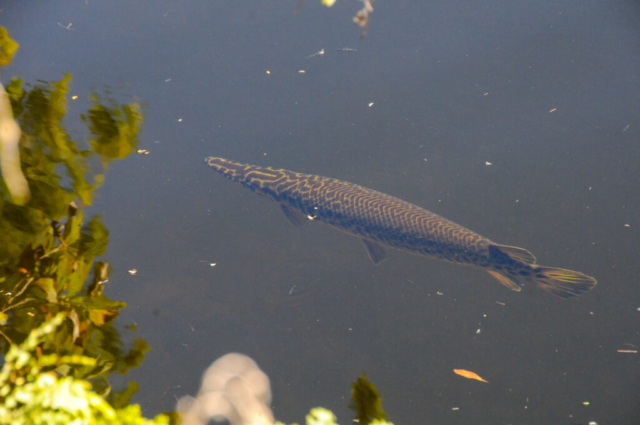




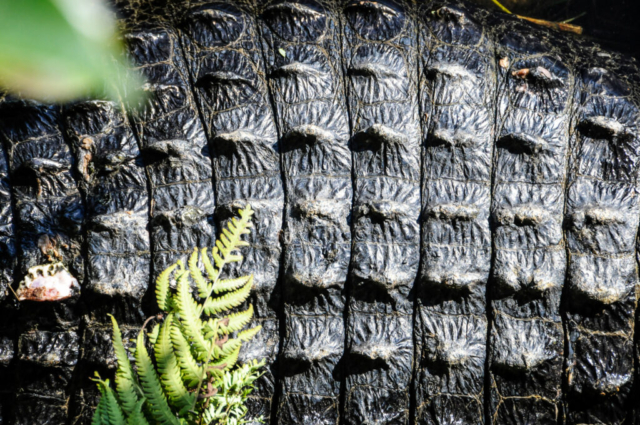



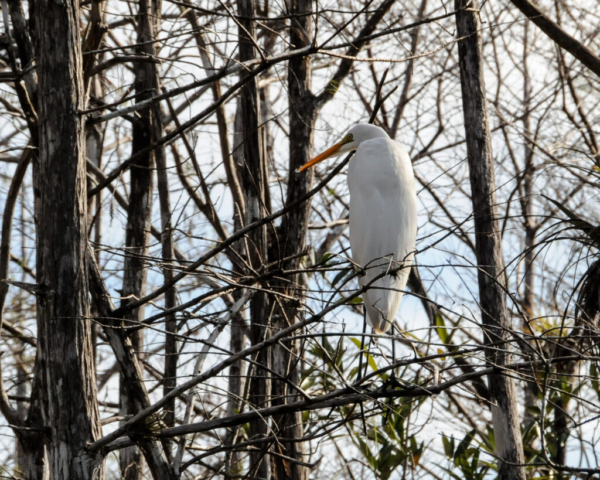




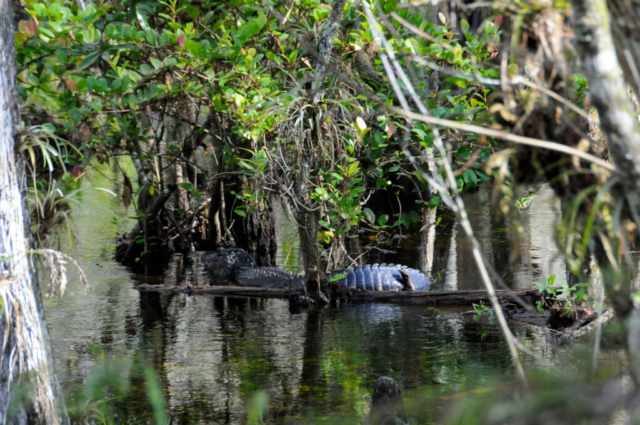














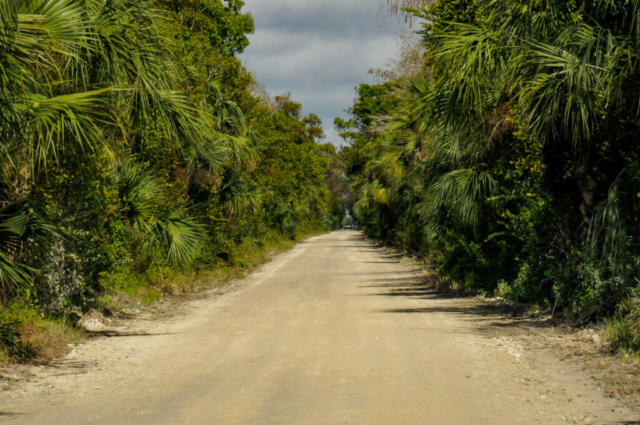





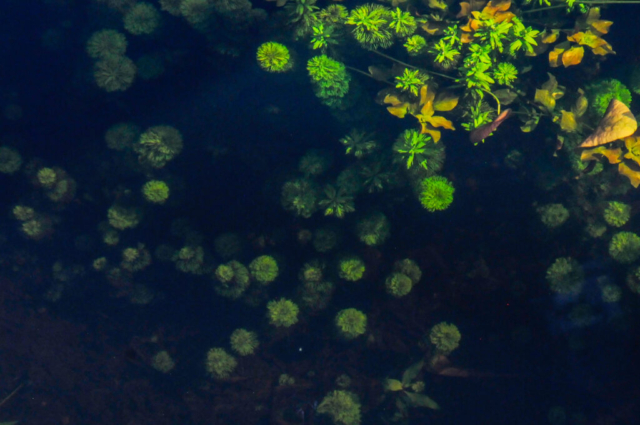






















Comments
5 responses to “Big Cypress National Preserve”
Lots of critters and skeets. Thanks for sharing, have fun.
You down in gator country-be careful!-
Love the pictures! Looks alittle like Malaysia.
I’m glad you have so many pictures of that loop drive. We really wanted to do it, but I am nursing a sore knee that balks at long car rides. We felt the same way about the area — fascinating for a visit, but just not a place we wanted to stay for long. I always wonder when we visit inhospitable territory what on Earth made people make their homes there.
I hope the new year is good to you all!
Why did the gator cross the road…Ha! While you were reading that I sneaked up behind you. CHOMP !